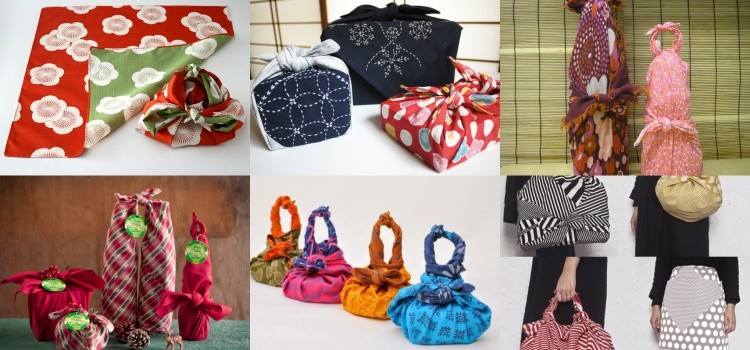Do you know the Japanese technique of wrapping things called furoshiki? This term refers to the Japanese technique of wrapping, or simply refers to a square piece of fabric used to pack various items.
Your name Furoshiki [風呂敷] can be literally translated as “furo” (bath) and “shiki” (to open). In this article, we will explore all the details of this square piece of cloth and its numerous uses.
Traditionally furoshiki is used to transport clothes, gifts or other goods. It has been used in infinite ways for over a thousand years. Wrapping techniques can be used on smaller fabrics and even napkins.
There is no fixed size for furoshiki, they can vary from hand size to size bigger than sheets. The big one is about 2 meters and the basic one is usually 34 to 37 centimeters.
Table of Content
Picnic among the flowers
Following the cherry blossom trail, in the month of April, in a village called Shirakawago, I encountered the friendly Furoshiki for the first time. It's a square piece of cloth in which people wrap everything: gifts, boxes, bottles, books, obentos (lunch boxes) and more.
In addition to all the artistic detail that makes a difference in the package, it can be transformed into a canteen, a handbag or a crossbody bag. A small, tightly wrapped furoshiki can imitate a flower, decorating a treat (small gift).

The gifts are wrapped in beautiful floral fabrics, preferably silk. For family use, a simpler fabric will do. When wrapping a gift with furoshiki, you are giving 2 gifts at the same time.
The Japanese are keen on elaborate fabrics with patterns suitable for each season of the year. In spring, for example, flowers and baby animals are preferred. The colors refer to the holiday or events of the time.
Things to do with furoshiki wipes
The Japanese art of wrapping scarves and cloths allows for countless possibilities. Furoshiki is often decorated with traditional designs or by shibori (dyeing technique).
With furoshiki it is possible to make a ring bag, bottles, bag to put books, fruit baskets, bag to put objects, wrap gifts, make a summer bag, create a vase holder, make a lunch box, wrap gifts with bow and much more most.
See below several techniques being applied in a furoshiki:

THE STORY AND ORIGIN OF FUROSHIKI
Furoshiki originated in the Nara period (710 - 784) to transport the Emperor's goods. Later, in the Heian period (794 - 1185), the nobility widely used this resource to pack clothes. In onsen or bathhouses, this was the method used to separate each person's belongings.
In the 20th century, furoshiki declined due to the popularity of artificial packaging and plastic. However, in 2006, the Japanese Minister of the Environment, Yuriko Koike, launched a campaign to promote the use of cloth origami, another nickname for furoshiki. The reason is simple – its use is ecological, in addition to avoiding the waste of plastic bags.
Any tablecloth, napkin or piece of calico print, even a beach wrap can easily be transformed into a bag or wrap a gift in a special way using this traditional fabric folding technique.
The reader is invited to learn about the ways, from the simplest to the most elegant, of tying furoshiki. This is an artful, elegant, original and friendly way to carry and store things.
